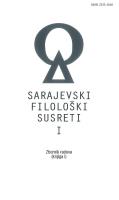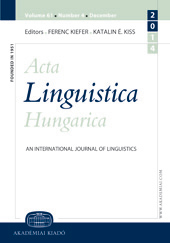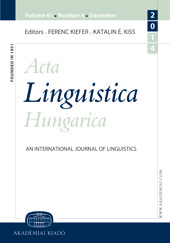
SISTEM PADEŽA SA KVALIFIKATIVNIM ZNAČENJEM U KOPULATIVNOM PREDIKATU U ROMANU OSTRVO MEŠE SELIMOVIĆA
This paper focuses on the analysis and the classification of prepositional and non-prepositional case structures which bear the meaning of qualification/modification within copulative predicate in Meša Selimović’s novel Ostrvo. This examination is semantically focused on the category of adverbial qualification, and syntactically on case structures. In accordance with the topic of the novel as well as with the language means which the author uses in order to describe the characters and their lives, a lot of structures discussed in this paper belong to a semantic category of qualification and appear on about 100 pages of the novel, show a semantic potential of these case forms in the domain of qualification in a broader sense, i.e. they point out its mixing with other semantic categories.
More...

